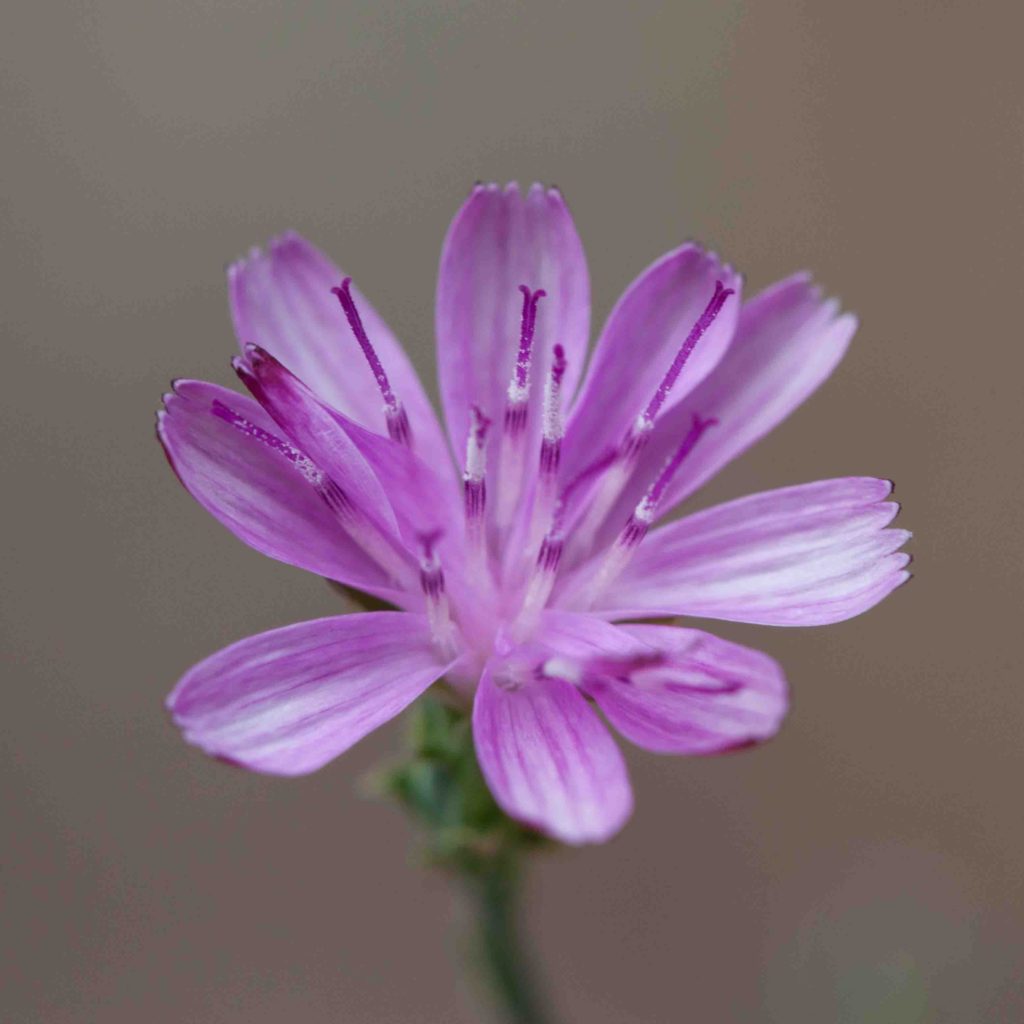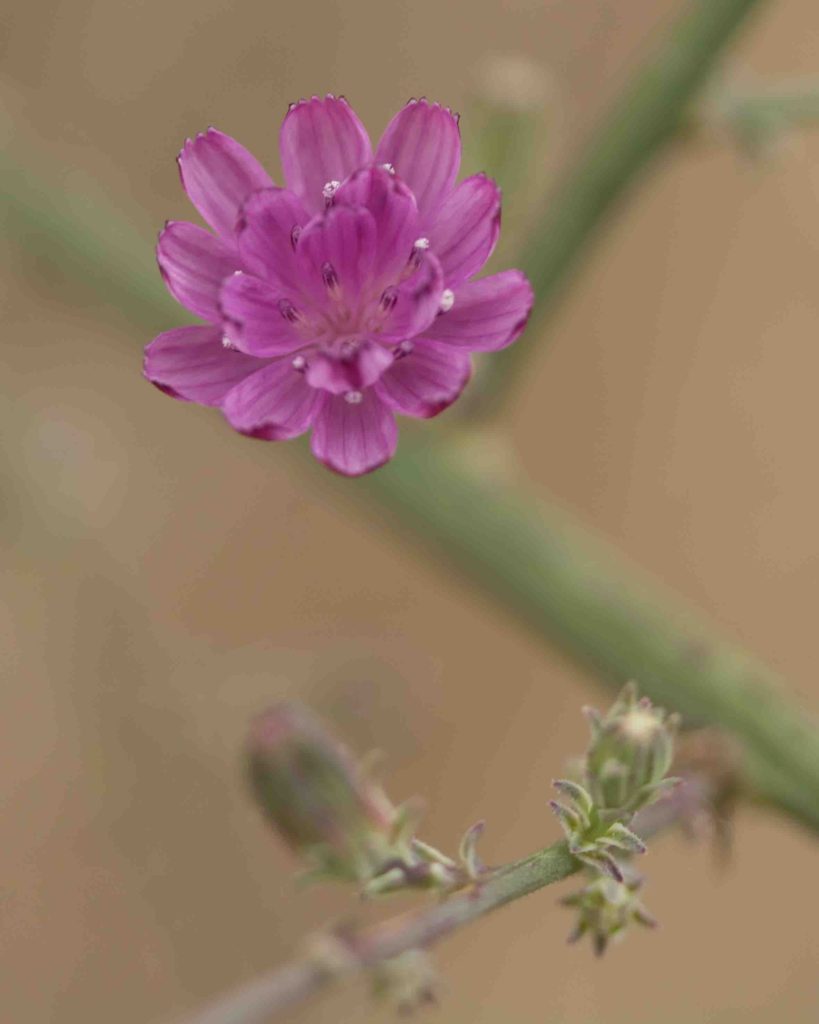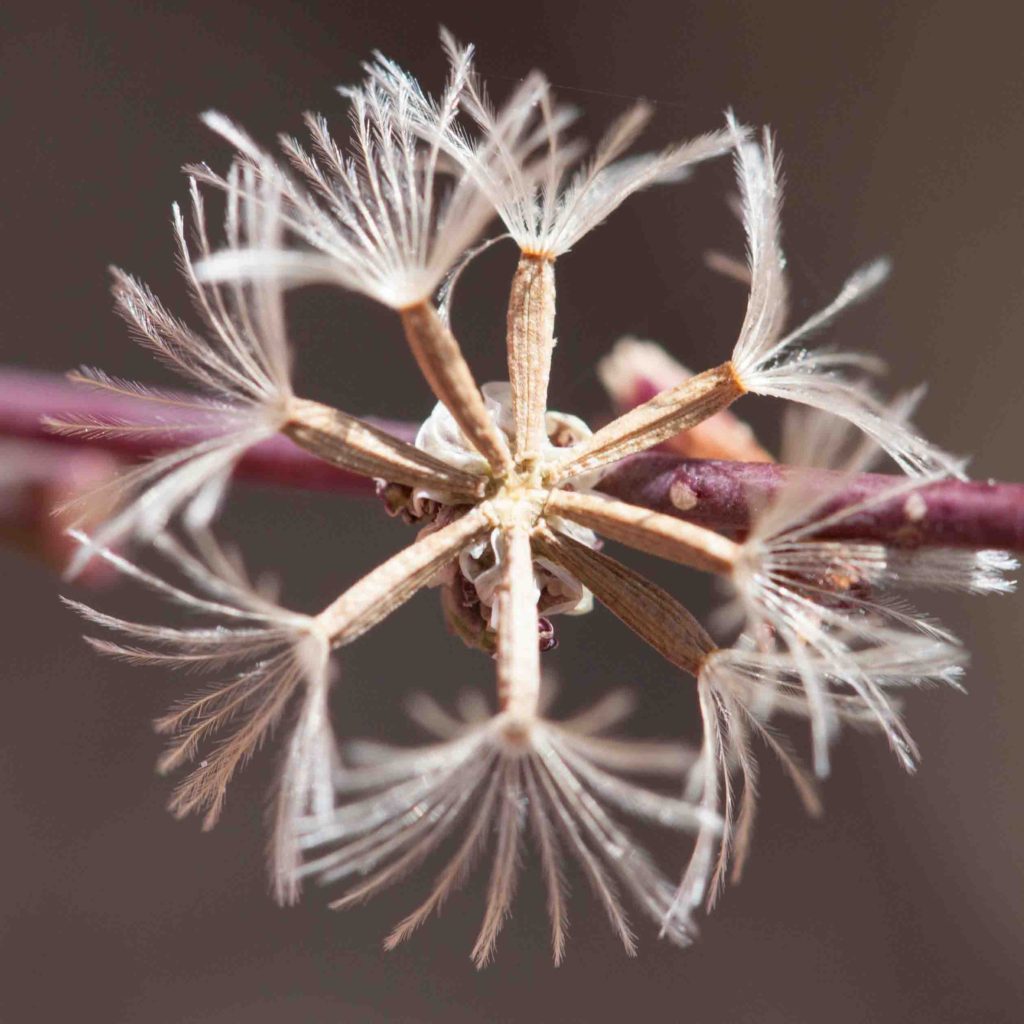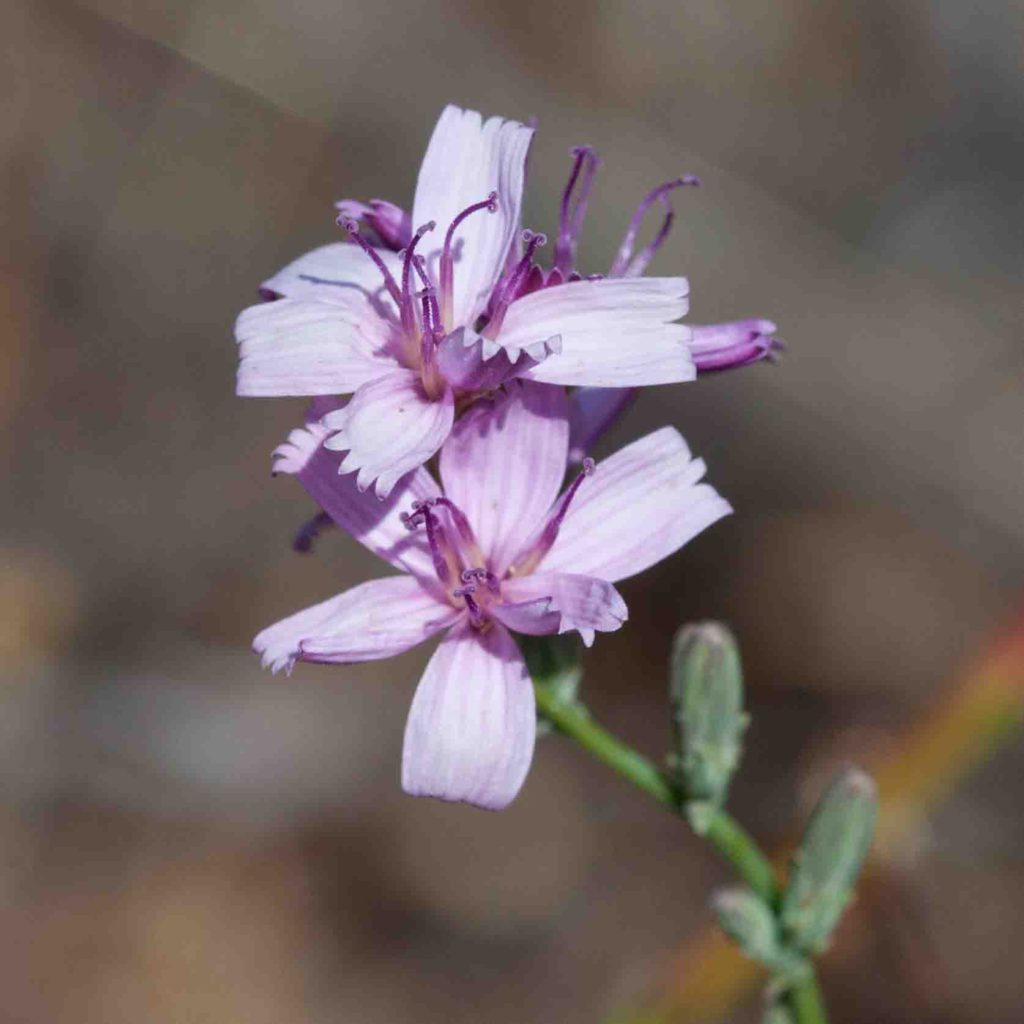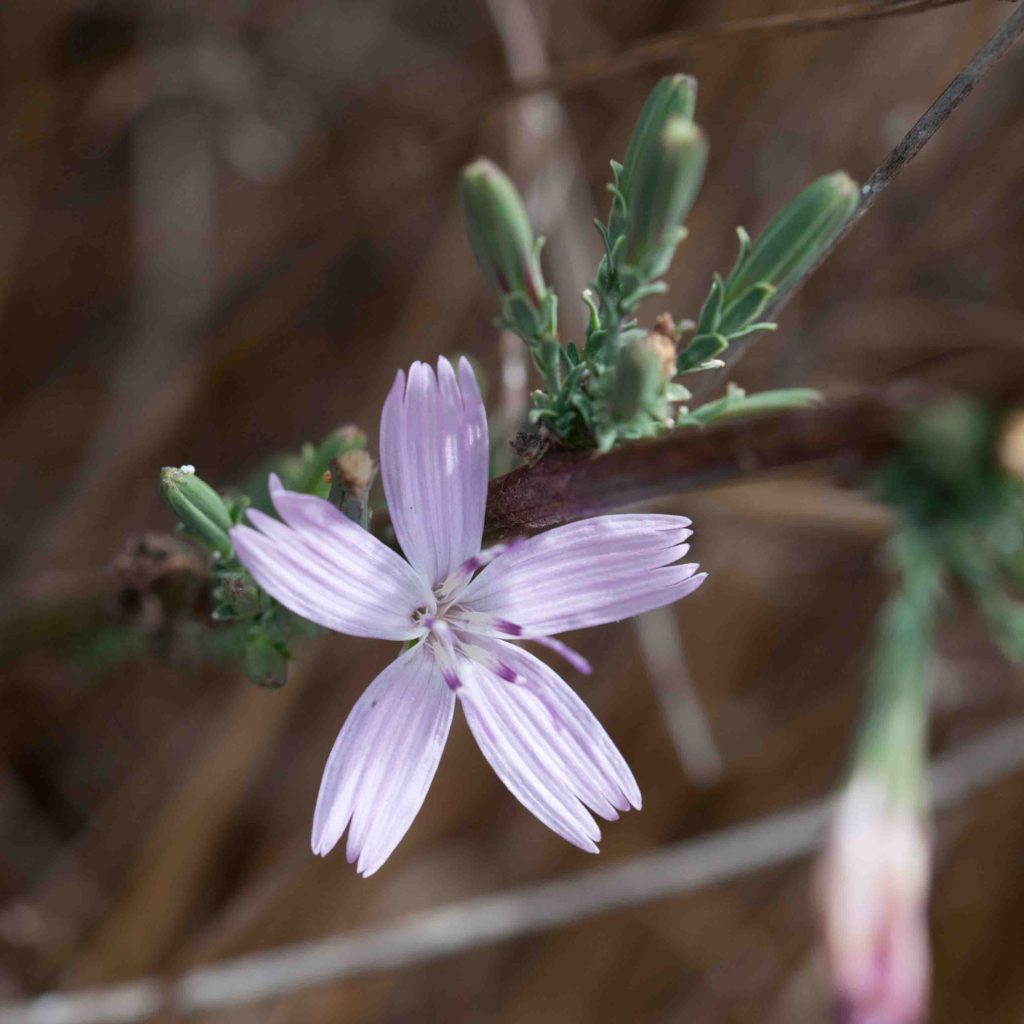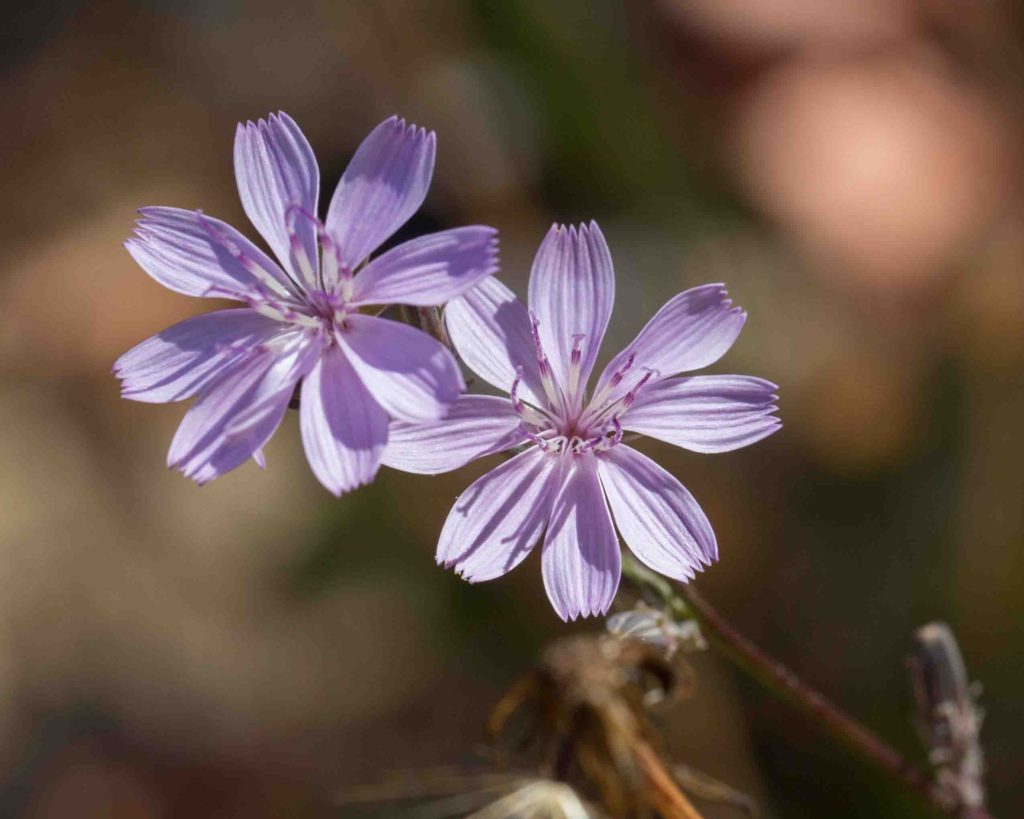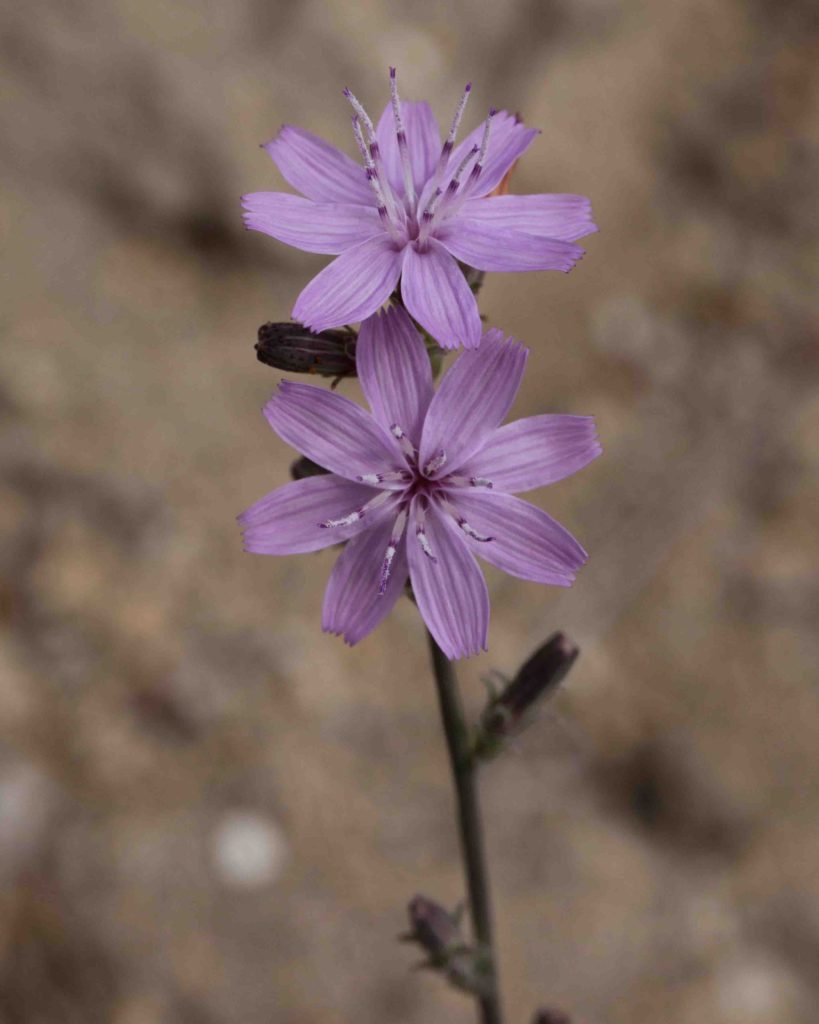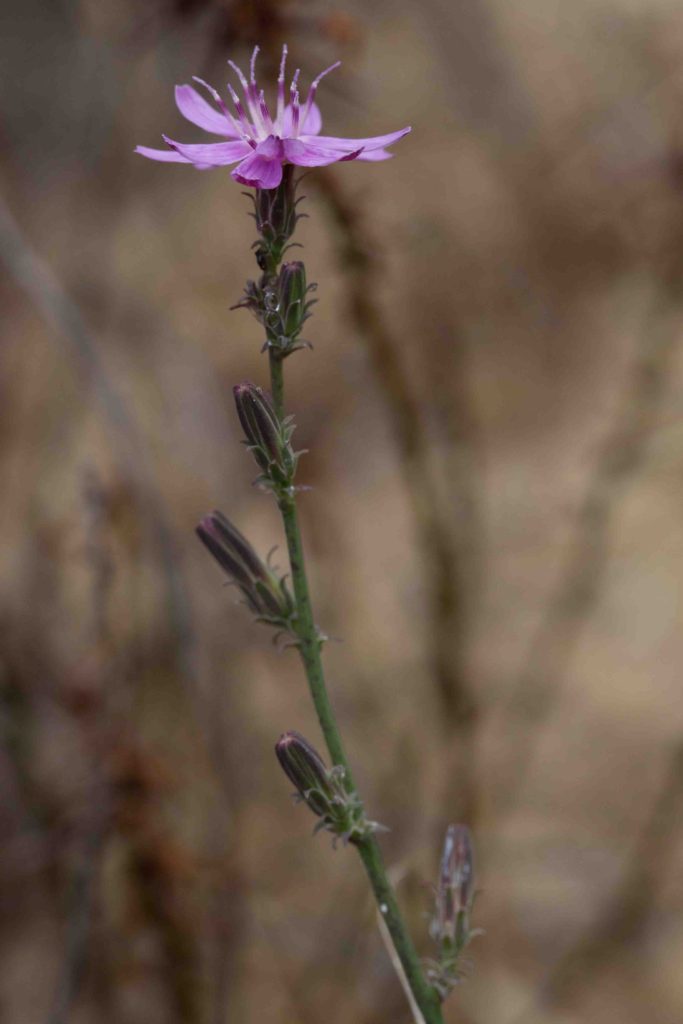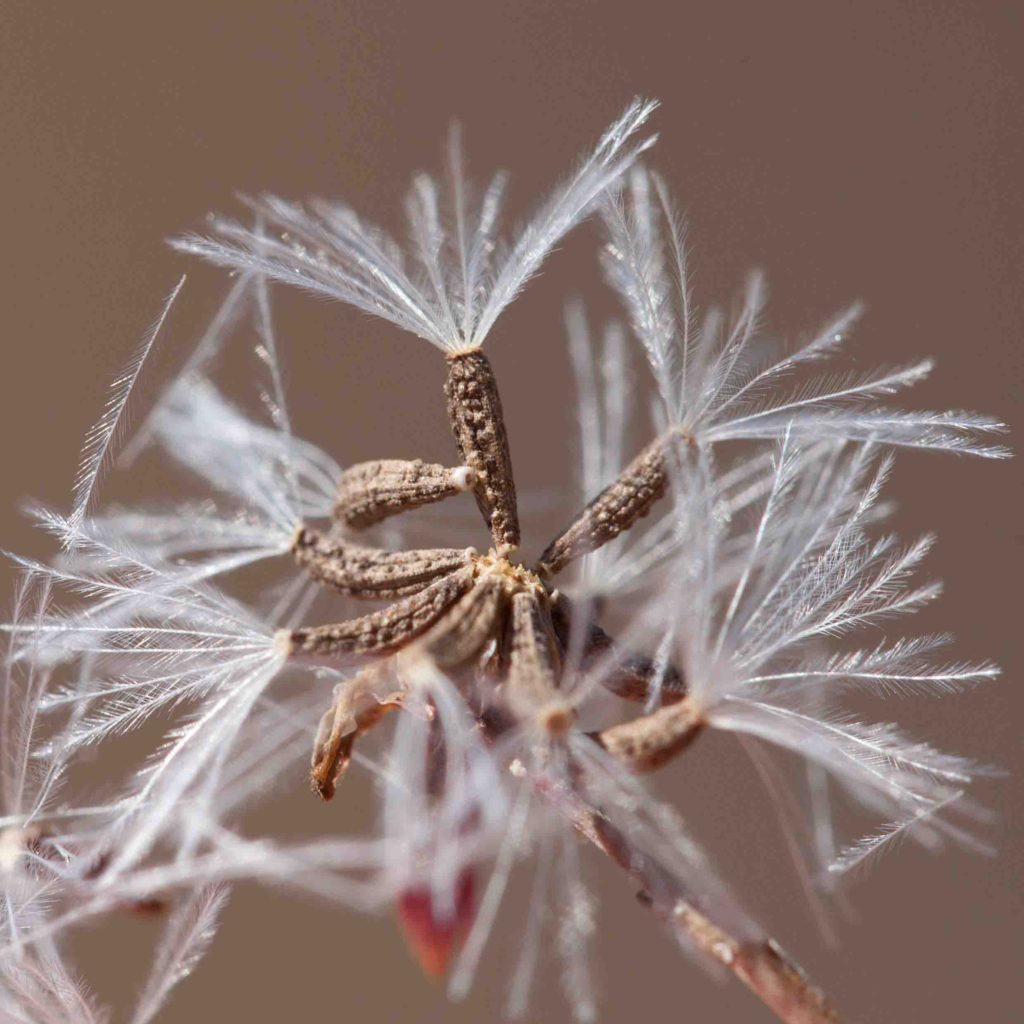Asteraceae: Sunflower Family – Cichorieae (Dandelion) Tribe: Stephanomeria
The Sunflower family is a very large family with over 25,000 members. Botanists subdivide the family into a number of tribes, of which 14 are present in Monterey County. The Cichorieae (Dandelion) tribe has several distinctive features. First, they all have stems with milky sap. Second, they do not have disk and ray flowers like typical daisies. Instead they have “ligules”, which resemble strap-like ray flowers. Unlike ray flowers, ligules have both male and female parts – a necessity for reproduction in the absence of disc flowers. A third difference is that ray flowers have 0–3 lobes at the tip; ligules have 5. This page covers some of the Stephanomerias or Wire-lettuces. These are variable and are difficult to identify with certainty. Pay attention to the number of ligules, the length of the peduncle, the form of the fruits, and whether the phyllaries are appressed or recurved.
Santa Barbara Wire-lettuce – Stephanomeria elata
Blooms:
July–Nov
Plant Height:
0.5–1.5 m
Flower Size:
Medium
Origin:
Native
Habitat:
Grassland & disturbed areas
Notes:
This is most readily distinguished by its 9-15 pink ligules, and its outer phyllaries which are generally reflexed. Its peduncles are 3–7 mm long. The fruits are grooved, and may be either smooth or roughened. The pappus elements, like those of the Rod & Wand Wire-lettuces (Stephanomeria virgata, see below), are plumose their entire length and may be either white or tan.
Wand Wire-lettuce / Tall Stephanomeria – Stephanomeria virgata subsp. pleurocarpa
Blooms:
June–Nov
Plant Height:
0.5–2 m
Flower Size:
Medium
Origin:
Native
Habitat:
Fields & disturbed places, many communities
Notes:
This is a common late summer bloomer. There are two subspecies of Stephanomeria virgata, both having dark pink flowers (occasionally white). This plant has 5–6 ligules, and its outer phyllaries are appressed. It is more common than subsp. virgata, which has 8–9 ligules and outer phyllaries which are strongly reflexed. It typically has a prominent main stem and wand-like branches (virgata being latin for wand-like). The peduncles are short, 3–10 mm. The fruits are smooth to tubercled, but are not grooved; this is in contrast to Santa Barbara Wire-lettuce (Stephanomeria elata, see above) and some other stephanomerias. The pappus elements are plumose for their entire length, unlike some other stephanomerias.
Rod Wire-lettuce / Tall Stephanomeria – Stephanomeria virgata subsp. virgata
Blooms:
June–Oct
Plant Height:
0.5–2 m
Flower Size:
Medium
Origin:
Native
Habitat:
Fields & disturbed places, many communities
Notes:
This is essentially identical to Wand Wire-lettuce (Stephanomeria virgata subsp. pleurocarpa, see above). However, this has 8–9 ligules, and outer phyllaries which are strongly reflexed.
